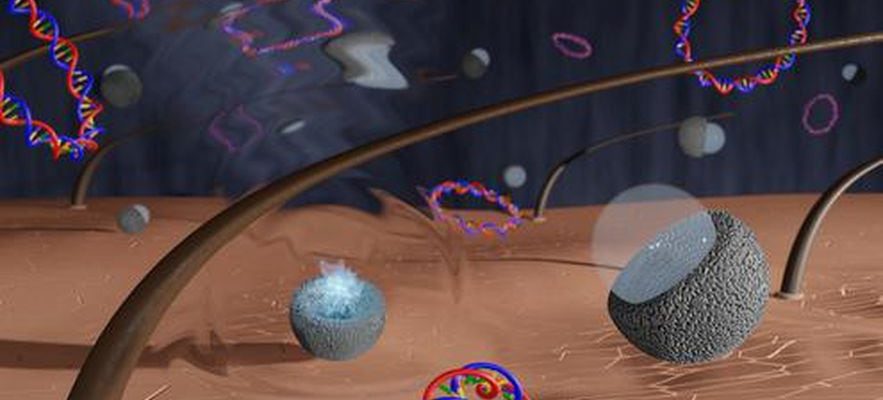Will the vaccines of the future be administered by simple skin application? Possible, if we are to believe a team of researchers from the University of Oxford. They explained, during the Acoustics 2023 conference which took place from December 4 to 8 in Sydney, Australia, having developed a mixture of vaccine molecules and small proteins. They then applied the liquid to the skin of mice which they exposed to ultrasound for 90 seconds, reports the specialized site Eurekalert.
“Our method relies on an acoustic effect called ‘cavitation,’ an acoustic phenomenon that allows bubbles to be created using a sound wave and then burst,” explains Dunn-Lawless, a doctoral student at the Institute of Biomedical Engineering at University of Oxford. This method has many advantages: under the impact of ultrasound, the bubbles are first pushed into the upper layers of the skin, then they eventually “burst” and propel the vaccine deeper while removing dead cells from the skin. skin, which further facilitates its passage.
A useful method for messenger DNA vaccines
Result: even if the cavitation vaccine delivers 700 times fewer vaccine molecules than a needle injection, it elicited a higher immune response, assure the researchers, who suppose that this could be due to the fact that there is more of immune cells in the skin than in the muscles. A hypothesis that still needs to be confirmed. Best of all, no signs of pain or skin damage were observed in the rodents.
Ultrasound allows vaccines to be administered through the skin. This technique, which uses sound waves, creates bubbles that facilitate the passage of the vaccine.
© / Darcy Dunn-Lawless, University of Oxford
This technique could therefore lead to vaccines that are more effective, less expensive, and with little risk of side effects. The cavitation approach could in particular prove useful for the difficult administration of DNA vaccines. It could, above all, facilitate vaccination campaigns. In fact, according to the US Centers for Disease Control and Prevention, approximately 25% of adults and 66% of children are afraid of needles, which sometimes causes them to delay their vaccine.
Before that, new studies will have to confirm the safety and effectiveness of the method, in particular because the rupture of the bubbles in the skin remains too unpredictable and can release the vaccine molecules unevenly. Still a little patience.
